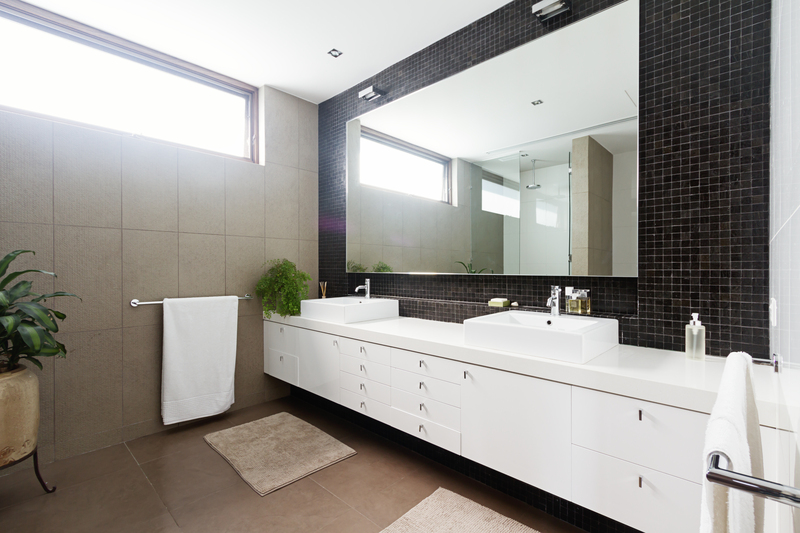Enhancing Life: The Crucial Role of Indoor Air Quality for Homes and Businesses
Posted on 20/06/2025
Enhancing Life: The Crucial Role of Indoor Air Quality for Homes and Businesses
Indoor air quality (IAQ) is more than just a trending topic--it's a fundamental aspect of healthy living and productive work environments. Whether at home or in commercial settings, the quality of the air you breathe indoors directly impacts health, well-being, comfort, and even operational efficiency. With most people spending over 90% of their time indoors, understanding and improving IAQ has never been more crucial.
What Is Indoor Air Quality and Why Does It Matter?
Indoor air quality refers to the cleanliness and composition of the air inside buildings and structures. Good IAQ means:
- Low concentrations of indoor pollutants
- Good ventilation rates
- Comfortable temperature and humidity levels

Common Sources of Indoor Air Pollution
The sources and types of indoor air pollutants vary between homes and businesses, but they often include:
- Biological pollutants: Mold, pollen, pet dander, and bacteria
- Chemical contaminants: Volatile organic compounds (VOCs) from paints, furniture, and cleaning products
- Combustion byproducts: Carbon monoxide, nitrogen dioxide, and tobacco smoke
- Particulate matter: Dust, fibers, and microscopic particles from both outdoor and indoor sources
Recognizing these sources is the first step toward addressing indoor air quality issues.
Health Risks of Poor Indoor Air Quality
The implications of substandard indoor air extend beyond temporary discomfort. Significant risks include:
- Short-term effects: Eye, nose, and throat irritation, headaches, fatigue, and dizziness
- Long-term health problems: Respiratory diseases, cardiovascular issues, cancer, and aggravation of chronic conditions like asthma
- Increased allergy symptoms: Persistent exposure to indoor allergens can intensify hay fever, rashes, and respiratory issues
- Decreased productivity and mental clarity: Particularly in workplaces, poor IAQ leads to reduced focus and absenteeism
For homes and businesses alike, clean air is a key ingredient for a thriving community or workforce.
Benefits of Good Indoor Air Quality in Homes
Improving indoor air quality at home delivers a wide range of advantages:
- Supports respiratory and overall health: Clean air lowers the risk of respiratory infection and chronic diseases.
- Enhances sleep quality: Pollutant-free bedrooms result in deeper, more restful sleep.
- Reduces allergens and asthma triggers: Regular air filtration and humidity control can significantly cut down allergen exposure.
- Boosts mood and energy: Breathing fresh air improves emotional well-being and cognitive performance.
- Prevents home damage: Proper humidity and reduced contaminants prevent mold growth and material decay.
Case Study: Indoor Air Quality Improvements in Residential Settings
A recent survey showed that households upgrading their air filtration system and increasing ventilation experienced a 30% reduction in sick days among family members, reinforcing the value of investing in indoor air upgrades.
Importance of Indoor Air Quality in Business and Commercial Spaces
Workplaces, offices, schools, and healthcare facilities each present unique IAQ challenges. High-occupancy areas are more susceptible to air quality problems, which can disrupt operations and reduce satisfaction.
- Elevates employee health and reduces absenteeism: Workers in environments with quality air report fewer health issues and take fewer sick days.
- Improves productivity: Good air quality positively impacts decision making, focus, and task performance.
- Enhances customer experience: In retail and hospitality, clean air is a mark of professionalism and care.
- Demonstrates corporate responsibility: Investing in employee well-being reflects strong organizational values.
- Protects sensitive equipment and products: Many industries depend on controlled indoor environments to prevent damage to electronics, perishables, or pharmaceuticals.
Studies Linking Air Quality and Workplace Performance
Research by Harvard University's Healthy Buildings Program found higher cognitive function scores and better decision-making performance in employees working in well-ventilated, low-pollutant environments. The economic benefits for businesses can be substantial, with fewer medical claims and lower turnover.
Key Strategies to Improve Indoor Air Quality
Addressing indoor air quality concerns does not need to be complicated. Here are essential strategies:
1. Source Control
- Choose low-emission products: Select paints, flooring, and furniture certified for low VOCs.
- Store chemicals safely: Keep cleaning and maintenance supplies sealed and ventilated.
- Prohibit indoor smoking: Enforce no-smoking policies where people work or reside.
2. Ventilation Improvements
- Open windows regularly: Natural airflow helps disperse indoor pollutants.
- Use mechanical ventilation: Ensure HVAC systems are balanced, distribute fresh air, and remove stale air efficiently.
- Install exhaust fans: Particularly in kitchens, bathrooms, and laundry rooms.
3. Air Filtration and Cleaning
- Use high-efficiency air filters: HEPA filtration captures microscopic allergens and particulates.
- Consider air purifiers: Stand-alone units are especially useful for allergy sufferers and in problem areas.
- Maintain equipment: Replace filters regularly, and schedule professional HVAC inspections.
4. Control Humidity Levels
- Use dehumidifiers or humidifiers as needed: Ideal humidity (30%-50%) prevents mold, dust mites, and respiratory irritation.
- Fix leaks promptly: Stop sources of excess moisture inside walls, ceilings, or around plumbing.
5. Regular Cleaning and Maintenance
- Dust, mop, and vacuum frequently: Use equipment with HEPA filters if possible.
- Clean ducts and vents: Remove dust accumulation in HVAC systems to prevent recirculation of contaminants.
Technological Advances in Indoor Air Quality Solutions
Technology is driving the modernization of indoor air quality monitoring and improvement solutions. Examples include:
- Smart air monitors: These measure real-time levels of VOCs, CO2, particulate matter, and humidity, sending alerts to your smartphone.
- Integrated HVAC controls: Modern systems automatically adjust ventilation and filtration based on occupancy and pollutant readings.
- UV-C air sanitization: Ultraviolet light installed in HVAC systems can neutralize bacteria, viruses, and mold spores.
- IoT-enabled air purifiers: These devices track and enhance air quality autonomously, optimizing performance.
How to Assess Indoor Air Quality in Your Space
Testing and monitoring are the foundation of any indoor air quality improvement plan. To assess your space:
- Start with a walkthrough: Look for signs of water leaks, mold, unusual odors, or visible dust.
- Use air quality monitors: Consumer-grade monitors indicate levels of key pollutants and trends over time.
- Hire professionals for detailed assessment: Experts can perform comprehensive testing and recommend targeted solutions.
Regular assessment lets you pinpoint risks before they impact occupants--essential for both homes and businesses.
Legislation and Standards for Indoor Air
Governments and industry bodies have established indoor air quality standards to promote health and compliance.
- ASHRAE Standard 62.1: Minimum ventilation and air quality requirements for commercial buildings.
- EPA Indoor Air Quality Tools for Schools: Guidelines for maintaining healthy learning environments.
- OSHA Indoor Air Quality Regulations: Protects workers in certain industries from harmful exposure.
- LEED certification: Recognizes green buildings including high IAQ performance measures.
Understanding and adhering to these standards can prevent legal issues and boost trust among occupants, clients, and stakeholders.

Frequently Asked Questions about Indoor Air Quality
- What are the most effective ways to improve indoor air quality?
- Source control, ventilation, filtration, humidity regulation, and regular cleaning are considered the pillars of indoor air improvement.
- How often should air filters be replaced?
- Most HVAC filters should be changed every 1-3 months, but check your manufacturer's recommendations for best results.
- Are plants effective for air purification?
- While some houseplants can remove certain toxins, mechanical ventilation and filtration are typically much more effective for significant improvements.
- Can indoor air be more polluted than outdoor air?
- Yes. According to the EPA, indoor air can be 2 to 5 times, or even up to 100 times, more polluted than outdoor air due to confined space and pollutant accumulation.
Conclusion: Prioritizing Indoor Air Quality Enhances Every Life
The crucial role of indoor air quality for homes and businesses is undeniable. Whether you're a homeowner aiming to foster a safe environment for family or a business prioritizing employee health and client satisfaction, focusing on IAQ pays dividends for health, productivity, and happiness.
By understanding the risks, recognizing the benefits of clean air, and acting on proven improvement strategies, you are actively enhancing life indoors. Ongoing attention to indoor air quality ensures that your home is a sanctuary and your workplace is an engine for success.
Take steps today--invest in air quality, and you'll notice the difference in every breath.



.png)